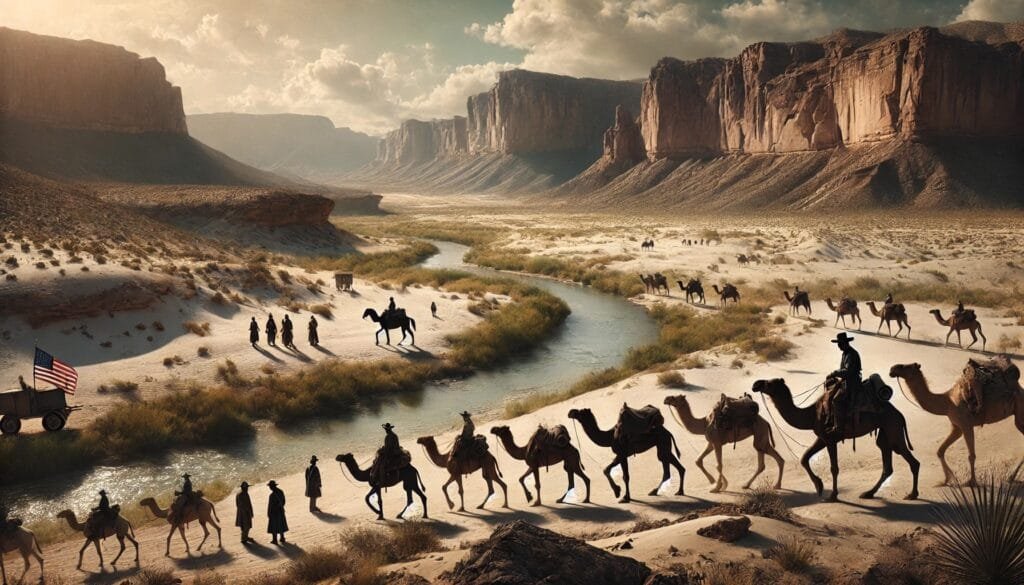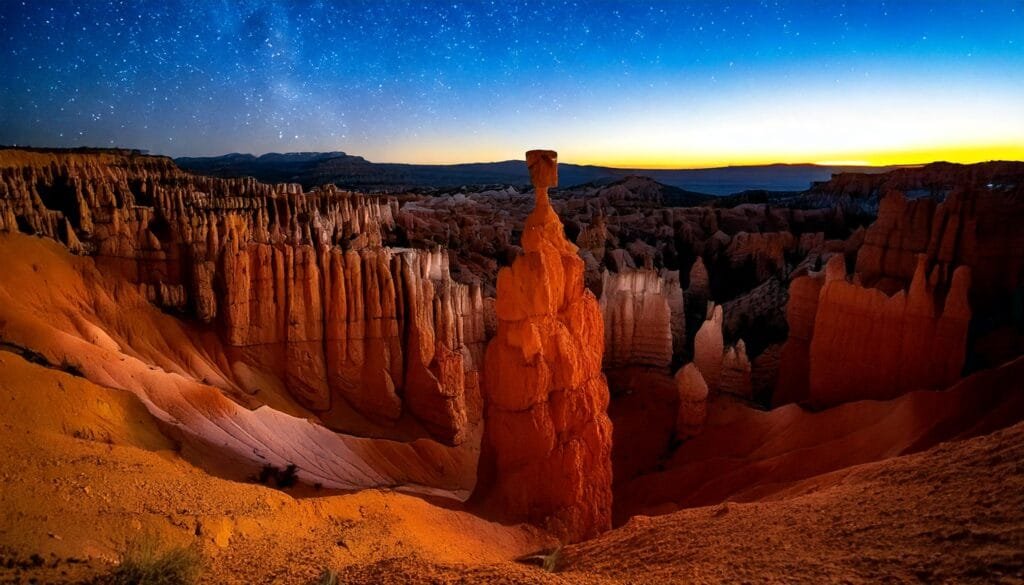I love finding quirky stories to share—and this one caught my attention immediately. The rugged landscapes of the American West have always been home to tales of adventure and resilience. But one of those chapters in history stands out as particularly intriguing. California had just become a state, Jefferson Davis was the United States Secretary of War, and the US Army brought camels to what would someday become Big Bend National Park.
Camels arrive in Big Bend

In the mid-19th century, America was expanding its frontiers. These new arid regions posed significant challenges for transportation. This was especially true for areas like Big Bend, which were known for their harsh environment and remote location. In 1855, under the leadership of Secretary of War Jefferson Davis, the U.S. government authorized the importation of camels from the Middle East. The aim? To aid in transportation and exploration in these arid terrains.
The arrival of these camels was nothing short of a spectacle. Ships laden with these foreign animals docked and were soon trekking across the deserts. With padded feet and water-storing humps, the camels quickly proved their worth, carrying heavy loads over long distances with minimal water and sustenance.

A camel/cultural catastrophe
Initially, the camels were evaluated for their suitability in combat conditions. This part of the experiment proved to be a failure. However, in a test of six camels vs. two six-mule wagons conducted by Brevet Major Henry C. Wayne, the camels easily hauled more oats in less time. Unfortunately, while the camels had clearly demonstrated their worth as pack animals, they posed problems for the soldiers and the army.
- Their smell was difficult to adjust to.
- They frightened the horses.
- They could be stubborn, and if someone tried to discipline them, they vomited their cud to retaliate.
- The camels, with their distinct behaviors and needs, required specialized care and handling, which many of the soldiers were unprepared for.
- They also had the ability to…well, poop without warning. Woe to the soldier who followed them.
The experiment ends
While camels and the US Army had trouble adjusting to each other, they might have overcome these problems if it hadn’t been for the start of the Civil War. By the late 1860s, the U.S. Camel Corps was officially disbanded. Many camels were auctioned off, while others escaped into the wild, living out their days in the deserts of the American Southwest.
Today, you can find camel rides and other attractions near Big Bend National Park. While the camels won’t take you into the park, there are treks that go through the desert to give the same experience.
Final thoughts and looking forward
The legacy of the camel experiment persists. Stories of wild camels roaming the desert became part of local folklore, capturing the imaginations of generations. In today’s world, the tale of camels in Big Bend continues to captivate history buffs and enthusiasts. Modern entrepreneurs, recognizing the unique allure of this history, have taken steps to preserve and celebrate it. From guided tours of historical camel trails to exhibitions in local museums, the story of the Camel Corps is kept alive, reminding visitors of this unusual time in American history.
Next week, we’ll be visiting Utah’s Bryce Canyon National Park. Stop back for more fun facts and another jigsaw puzzle.
If you enjoyed this post and the puzzle, please leave a comment with your time on the puzzle. I’d also love to hear your thoughts on the post! Thanks for being here!
Did you miss last week’s Friday Morning Post and jigsaw puzzle? If you did, you can use this link to view Great Smoky Mountains National Park is heaven for nature lovers. Check out all my Friday Morning posts here.




10:26
17:42! I couldn’t keep all of those camels straight! The story is really cool. I like the smell thing!!
Thanks, Christy! Those little camels were challenging.
Fascinating account. I do remember hearing about them years ago when in high school. But didn’t really
remember that much. And your account added other details that built on that.
Comes under the heading of live and learn.
Thank you for another interesting piece of history.
Time: 15:40
Thanks, Della. I’d never heard of those camels before I started working on this post. It’s an amazing story.
My time was 15:33.
8:38. The older I get the more I realize that there are so many things that I don’t know. I’ve never heard this story before, and I found it fascinating. Thanks for sharing.
Thanks, Laura. I’m having fun with this year’s series and have learned so much myself! 🙂
11:41 pretty slow for me!
16:04
8:35, a little slow today. Love the history lesson!
Thank you for the fascinating history lesson on the U.S. Camel Corps! I’d never heard of them before. My time today was 6:59.
Thanks, Susan. This one was a big surprise for me!
They also introduced camels in Arizona. They were more costly than good.
8:46
7:55
I’d heard about the camels but not the details. Very interesting.
10:40 for me – pretty slow but I still enjoyed doing it and learning about camels in Big Bend
7:11 for me this morning, i never knew that story about the camels! thanks for sharing
19.45 the toughest parts were the varied gradients of the sand and cliffs. Very interesting back story!
I agree. The camels were the easy part of the puzzle!